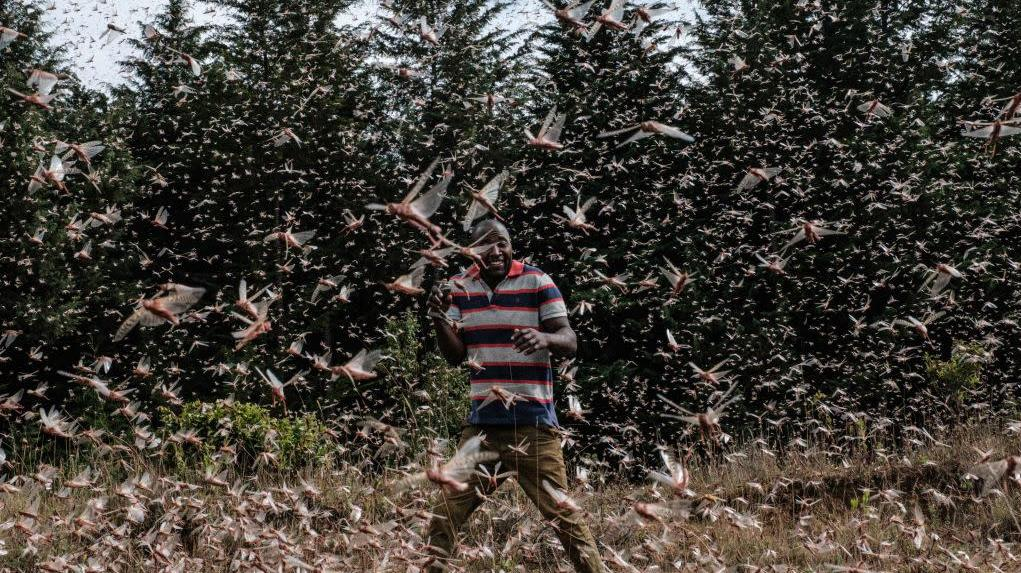Kenyan Farmers Turn A Plague Of Locusts Into Animal Feed
The current locust plague in Kenya is one of the worst in decades, and the voracious grasshopper swarms have been brutal, decimating crops along with livelihoods. Scientists are saying that the warmer sea water is creating more rain, waking up dormant eggs, and cyclones are dispersing the swarms at a higher frequency. Swarms of these things can travel up to 93 miles a day, containing a whopping 40-80 million bugs per square kilometer. This does not bode well for farmers, but there is one upside right now, ABC News reports.
A startup called The Bug Picture (awesome name, by the way), is working with central Kenyan communities to harvest these pests and mill them into protein-dense animal feed and organic fertilizer for farms. Good thinking.
Laura Standford, founder of The Bug Picture, said, "We are trying to create hope in a hopeless situation, and help these communities alter their perspective to see these insects as a seasonal crop that can be harvested and sold for money."
Enormous locust swarms are eating through vegetation in central Kenya's Laikipia County, and The Bug Picture is targeting swarms of five hectares or under in inhabited areas that would otherwise not be a good candidate for spraying insecticide. It pays 50 Kenyan shillings (about 45 cents) per kilogram of the grasshoppers, and between February 1 and 18, the project bought 1.3 tons of locusts. Once they're hauled in, the locusts are crushed and dried, and the pests end up in fertilizer or animal feed, boosting protein levels in soil and in animals. Let's hope this continuing fight ends well.
